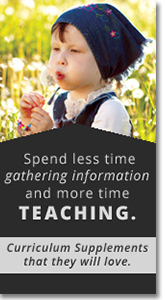ExchangeEveryDay Past Issues
 << Previous Issue
| View Past Issues | | Next Issue >>
<< Previous Issue
| View Past Issues | | Next Issue >> -Thomas Berry
An article by Amity Hook-Sopko, in Green Child Magazine, reports that “a new study out of Denmark found that living near and spending time in nature is measurably better for your mental health, both short and long term. The study followed more than 900,000 Danish people from 1985 to 2013 – taking into consideration their education, income, family history of mental illness, and how much green space surrounded them growing up. You can find the full study on the PNAS website.
So, after studying nearly one million people across three decades, they found that ‘children who grew up with the lowest levels of green space had up to 55% higher risk of developing a psychiatric disorder independent from effects of other known risk factors.’
In her book, Teaching Four-Year-Olds, Carol B. Hillman describes one of the many reasons she believes early educators have a responsibility to give children regular positive experiences with the natural world: “I want to provide young children the opportunity to observe, to smell, to taste, to feel, to hear all kinds of things. I want them to observe change and to find out why those changes take place. I want children to be interested in the world around them and to be part of that world as much as possible.”
Sandra Duncan and Jody Martin, in their book, Bringing the Outside In, describe the importance of giving children the opportunity to interact with nature both outdoors and indoors. They write that “early childhood educators have the best job in the world. Each day we have the privilege to work with children who are filled with imagination, hope, whimsy, wonder, and delight in the world around them. Educators have an enormous responsibility to do everything in our power to sustain this enthusiasm for life.”
|
Offer valid through October 1, 2021, at 11:59 pm Pacific Time. |






Post a Comment